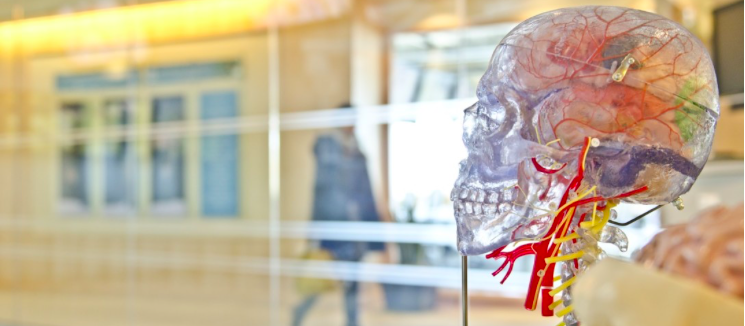Spidey sense. Gut feel. Whatever you call it, it’ll make or break the most important decisions in your life. The most successful executives I coach have it in spades. We’re talking about intuition, of course! Let’s dig into what it is and how it actually works.
Oprah has it.
Steve Jobs had it.
Mark Zuckerberg has it but recently didn’t listen to it and paid a huge price.
Elon Musk made the same mistake.
How—And Where—Intuition Actually Works
Here’s how to make your intuition stronger right now. My friends at NowSourcing have created a handy infographic, be sure to check it out here.
First, let’s consider how—and where—humans think. As I outlined in a previous blog, human beings actually have three brains. Since both our hearts and our intestines have neural tissue, we have the heart-brain, the gut-brain and the brain that sits in our cranium (or, if you count the one that sits in our cranium as three—reptile, mammalian, and human neo-cortex—then we actually have five brains!).
Where You Think:
- Reptilian Brain: Instinct
- An innate inclination toward a particular behavior in response to a certain stimulus
- It’s hardwired in the body from birth to keep us “not dead”
- Examples: we pull away from something hot, run from danger, etc.
- Mammalian Brain: Where much intuition, or “gut feeling”, occurs
- A natural, thoughtless process which requires no analysis or deep thinking
- Unconsciously developed over time from our experiences and belief
- Biases operate here and are unconscious—which is why they can be problematic
- Examples: trusting someone that’s similar to you, feeling good around someone, etc.
- Prefrontal Cortex: Analytical thinking
- Intentional, organized, conscious thoughts
- Used for planning, problem-solving, decision making
- Some biases operate here too, such as making decisions based on a limited data set, or past experiences
- Example: weighing the pros and cons of a decision before making it, analyzing potential return on investment before sponsoring a project, etc.
Check out these famous examples of intuition, and consider what parts of the brain were involved:
- 44 BCE: Calpurnia, the wife of Julius Caesar, dreams of her husband’s assassination and urges him not to go to the Senate, where he goes anyway and is killed
- It’s not magic: Calpurnia was unconsciously reacting to the tensions and signs of political dissent brewing in the Roman Empire [some heart brain, some gut brain, some reptilian and mammalian brain activation]
- 1936: On a hunch, automobile tycoon Charles Howard purchases an underweight colt named Seabiscuit, who goes on to become one of the greatest racehorses in history
- It’s not magic: Howard’s business savvy and military cavalry training gave him the experience to recognize a gifted horse and a sound financial bet [some gut brain, some mammalian and prefrontal cortex brain activation]
- 1962: After being rejected by dozens of publishers, Madeleine L’Engle’s A Wrinkle In Time is picked up by John Farrar of Farrar, Straus, & Giroux, which had not published children’s books before [some heart brain, some gut brain, some mammalian and possibly prefrontal cortex brain activation]
Most cultures today worship the intellect—the prefrontal cortex functions—and thus often unintentionally condition children to discount their intuition. So let’s consider Albert Einstein and how when he discovered the theory of relativity, he said (to paraphrase) “First I felt it, then I saw it, then I could explain it.” Sounds like a bunch of five brain activity to me!
How Intuition Works
Your intuition is much faster than your analytical mind and relies on feelings—note above I refer to the neural tissue we all have in both our gut and our heart.
We often hear about women’s intuition and how it’s stronger than men’s. Why? Two reasons!
First, the insula in the female human brain is larger than in the male. The insula is often called the seat of intuition in human beings, and it’s where hurt feelings fester, as well as where hunches often spring from.
Second, our female ancestors needed to ensure not only their own survival but also their children’s. While the males were often single-tasking such as hunting (with their larger amygdalas), the females were multi-tasking. The females were caring for the children, watching for danger as they gathered food, tracking non-verbal cues from others, and organizing environmental input and information.
3 Steps To Optimize Your Intuition
1.) Notice your body’s reactions (changes in heartbeat, breathing, muscle tension).
2.) Understand that your intuition wants whatever you value most (happiness, health, prosperity)–your intuition could be signaling that even though a decision seems logical, it won’t bring you closer to your core goals.
3.) Likewise notice that your intuition is wiser than our ego, which may want you to make a specific decision for a certain gain, yet that gain might come at too high a cost—and your intuition will be trying to put on the brakes.
So how do you balance intuition and logic?
- Look at the meaning you are making about a certain situation to check your assumptions.
- Look at your organismic rights and if they will be honored and expanded by that decision.
- Check yourself for unconscious biases that might be getting in the way.
Follow your intuition when:
- Working in rapidly changing, high-stakes environments
- Performing tasks you have done many times before
- Brainstorming or discussing business with partners or coworkers
Follow your analytical brain when:
- Working in compliance scenarios or when under public or regulatory scrutiny
- Doing something you have never done before
- Hiring new talent or delegating work to employees
“Have the courage to follow your heart and intuition. They somehow already know what you truly want to become. Everything else is secondary.” – Steve Jobs, 2005 Stanford Commencement speech
The Net-Net
- Intuition is a combination of the five functioning brains you have
- Intuition can be cultivated and improved by paying attention to the input your brains are offering you
Your intuition might just be trying to tell you how to make better decisions—are you ready to listen?
You can hear more over on the podcast, Crack the Behavior Code, with host Christine Comaford!


